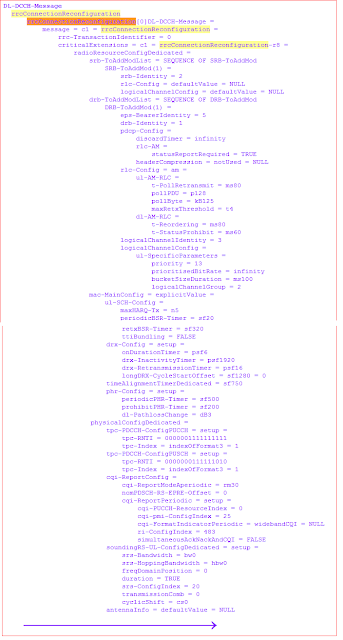E-UTRAN initiates the 'mobility from E-UTRA' procedure to a UE in RRC_CONNECTED state. The eNodeB sends MOBILITY FROM EUTRA COMMAND possibly in response to a 'Measurement Report' message from the UE or in response to reception of 'CS fallback indication' for the UE from MME. This procedure is initiated only when AS-security has been activated.
The purpose of this procedure is to move a UE from E-UTRAN to a cell using another RAT, e.g. GERAN, UTRA or CDMA2000 systems. The mobility from E-UTRA procedure covers the following types of mobility:
1. Handover, i.e. the MOBILITY FROM EUTRA COMMAND message includes radio resources that have been allocated for the UE in the target cell
2. Cell Change Order, i.e. the MOBILITY FROM EUTRA COMMAND message may include information facilitating access of and/or connection establishment in the target cell, e.g. system information. Cell change order is applicable only to GERAN
3. Enhanced CS fallback to CDMA2000 1xRTT, i.e. the MOBILITY FROM EUTRA COMMAND message includes radio resources that have been allocated for the UE in the target cell
MOBILITY FROM EUTRA COMMAND message
Direction: E-UTRAN => UE
Signalling Radio Bearer: SRB1
RLC Mode: AM
Logical Channel: DCCH
Transport Channel: DL-SCH
Some of the IEs in MOBILITY FROM EUTRA COMMAND message are described below:
cs-FallbackIndicator: Indicates if the CS Fallback procedure to UTRAN or GERAN is triggered
Purpose: Indicates which type of mobility procedure the UE is requested to perform (Handover, CCO, eCSFB etc…)
TargetRAT-Type: This IE indicates the target RAT type (utra, geran, cdma2000-1XRTT, cdma2000-HRPD)
TargetRAT-MessageContainer: This field contains a message specified in another standard, as indicated by the targetRAT-Type. It carries information about the target cell identifier(s) and radio parameters relevant for the target RAT. This means that the actual handover command message is built by the target RAT and is sent to the source eNodeB. The source eNodB includes this actual handover command in the MOBILITY FROM EUTRA COMMAND
CarrierFreq: Contains the carrier frequency of the target GERAN cell
SystemInfoListGERAN: If the IE ‘purpose’ is CCO and if this field is not present, the UE has to acquire SI/PSI from the GERAN cell
Example: MOBILITY FROM EUTRA COMMAND message

Mobility from E-UTRA failure
Either of the following condition is treated as ‘Mobility from E-UTRA failure’
· T304 expiry (mobility from E-UTRA failure)
· If the UE does not succeed in establishing the connection to the target RAT
· If the UE is unable to comply with (part of) the configuration included in the MobilityFromEUTRACommand message
· If there is a protocol error in the inter RAT information included in the MobilityFromEUTRACommand message, causing the UE to fail the procedure according to the specifications applicable for the target RAT
If the criteria for ‘Mobility from E-UTRA failure’ is met,then the UE should stop T304, if running and act as below:
· If the cs-FallbackIndicator in the MobilityFromEUTRACommand message was set to 'TRUE', indicate to upper layers that the CS Fallback procedure has failed
· Revert back to the configuration used in the source cell, excluding the configuration configured by the physicalConfigDedicated, mac-MainConfig and sps-Config
Reference: 3GPP TS 36.331






